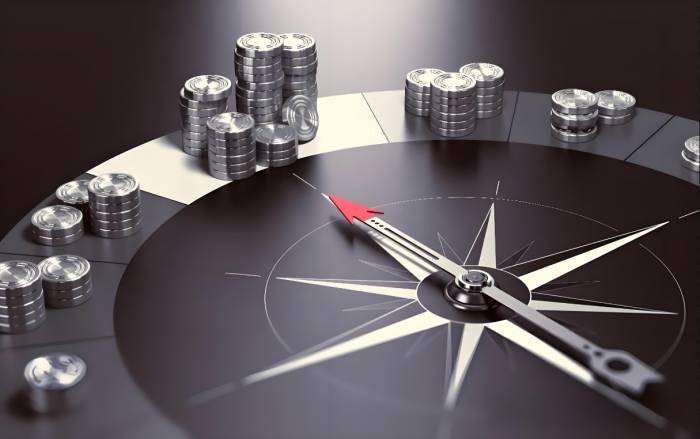The A-share market only saw a surge in trading volume yesterday, but today it has significantly contracted, with the total turnover of the two markets falling short of 800 billion yuan, which is considered a low level for this year. It seems that after the dynamics of foreign capital were closed during the trading session, domestic capital doesn't know how to play the game anymore. Despite last week's significant positive news and substantial purchases by foreign capital, the turnover did not break through one trillion yuan. Previously, even though domestic capital would follow suit when foreign capital sold off, they would also buy when foreign capital was buying, so A-shares often surged when foreign capital made significant purchases. Now, with foreign capital becoming a black box, domestic capital may not necessarily follow even when foreign capital is buying heavily. The market ecology has clearly deteriorated without the driving force of foreign capital, with daily frantic rotations and the risk of getting trapped if one chases the market. Although the index has reached new highs, the profit-making effect is quite poor.
Additionally, there have been some strange occurrences in the past two days. Yesterday, a netizen accurately predicted the dramatic rise and fall of Nanjing Chemical Fiber's stock, and today another netizen made a divine prophecy about the stock price increase of Zhongtong Bus. We initially thought the image we saw was a joke, but upon checking the Tonghuashun stock forum, it turned out to be true. Moreover, at the end of today's trading session, Nanjing Chemical Fiber experienced a dramatic rise and fall. It's important to note that the Shanghai Stock Exchange had already indicated it would initiate a trading investigation into Nanjing Chemical Fiber yesterday, and yet today it still managed to pull off a dramatic rise and fall. Isn't this acting against the wind? Are the current speculative funds so rampant?
Looking at other news today:
Goldman Sachs has raised the 12-month target for the MSCI China Index from 60 to 70; it has also raised the 12-month target for the CSI 300 Index from 3900 points to 4100 points.
Data from the past 20 years shows that after entering a technical bull market phase (i.e., the increase exceeds 20%), there is a 60% probability that the market will continue to rise in the next six months, with an average maximum return rate of 35%. However, as the uptrend matures, the driving factor for returns shifts from valuation expansion to earnings revision, which emphasizes the importance of earnings realization in maintaining a bull market.
Goldman Sachs maintains an overweight position on China A-shares (12-month return +11%) and a neutral position on offshore China (+8%), but believes the latter has tactical FOMO risks due to the conservative positioning of funds. At the industry level, it maintains an overweight position on TMT.
Non-ferrous metal sector correction

Gold, silver, copper, and other non-ferrous metal futures experienced a significant correction today after a series of sharp increases, with the A-share non-ferrous metal sector seeing a substantial adjustment, with the sector's decline exceeding 3%.We believe that the recent surge in futures prices of non-ferrous metals such as gold, silver, and copper is driven more by trading factors, including copper futures squeezes and geopolitical games. Although central banks in Europe and America have been raising interest rates for two years, global liquidity is still quite abundant. This excessive liquidity has supported the significant rise in assets like gold, Bitcoin, and global stock markets.
The market's touted fundamental logic is questionable: Global manufacturing PMI did enter an expansionary range in the first quarter, but it fell below the boom-bust line again in April. The United States' financial environment is in a tug-of-war state between easing and inflation rebound, and the Federal Reserve is more likely to maintain high interest rates for a longer period. There is a possibility of a recession in the U.S. economy. The European economy has indeed slightly warmed up, but it seems unrealistic to think that it will return to pre-pandemic conditions after a rate cut. Although the inflation rate has slowed down, the absolute prices have not decreased. Demand has not yet recovered, yet the prices of commodities are soaring. Isn't this looking for a recession?
As for the logic of gold rate cuts, gold is more likely to fall after actual rate cuts. Technology stocks, manufacturing recovery, and consumer stocks all benefit from lower interest rates. Where does gold stand in this context? At that time, it will be about comparing their cost-effectiveness. The various grand narratives now are nothing more than beliefs after a significant price increase. It is said that the bull market for gold is a distrust of the U.S. dollar system. If the United States reduces the deficit after the election, what should be said then?
Composite Copper Foil Soars
Today, the composite copper foil sector saw a significant increase, with companies like Wan Shun New Materials and Yinglian Shares hitting the daily limit during trading. Recently, copper prices have repeatedly hit new highs. The copper price of 88,000 corresponds to a traditional copper foil price of about 5.8 yuan per square meter, which is already 10% higher than the quoted price of composite copper foil. This has attracted increasing attention from battery manufacturers, and it is expected to catalyze more project advancements.
Finally, looking at the market, as of the close, the Shanghai Composite Index fell by 0.42%, the ChiNext Index fell by 0.77%, the Hang Seng Index in Hong Kong plummeted by 2.14%, and the Hang Seng Technology Index plummeted by 3.75%. The turnover of the two markets was less than 0.8 trillion, with more than 4,000 stocks falling.

Comments